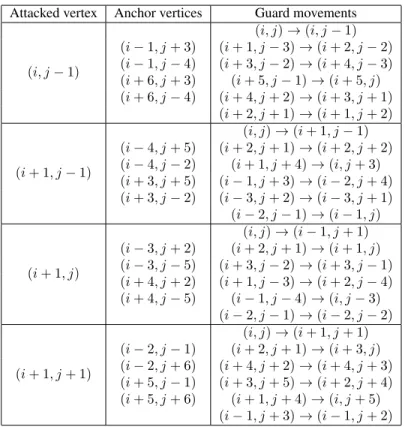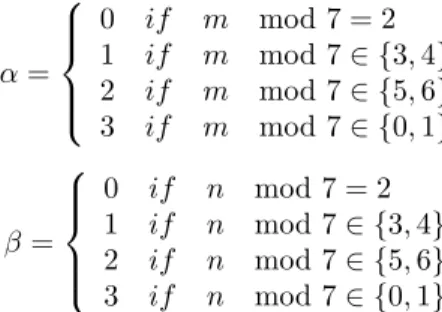A method for eternally dominating strong grids
Texte intégral
Figure




Documents relatifs
When a number is to be multiplied by itself repeatedly, the result is a power of this number.
The concentration of either our sample or titrant can affect the shape of our titration curve.. different acid sample concentrations As the
If we take the free monoid X* generated by an alphabet X, then we obtain the semiring P (X*) of all formai languages over X. Addition and multiplication are defined as usually.. Sum
Given a classification problem D, we use our algorithm and the genetic algorithm to search the feature f with high- est fitness λ D (f ) and we compare the sets of features ex-
The history of previous attempts to obtain a stronger result than Siegers is a curious chapter of accidents, and will be briefly summarised here before
This assumption is however not used in the definition of the ttelson constant, and we shall therefore consider also another type of Kelson- constant, which is more
To see that a qualitative argument can be used: we know that the completely ordered case minimize the energy and we are interested in the states that have the closer possible
We use three of these no- tions, unitary, dense and planar subcategories in Section 2 to describe the kernels of certain morphisms of categories (functors), called quotient maps, from

